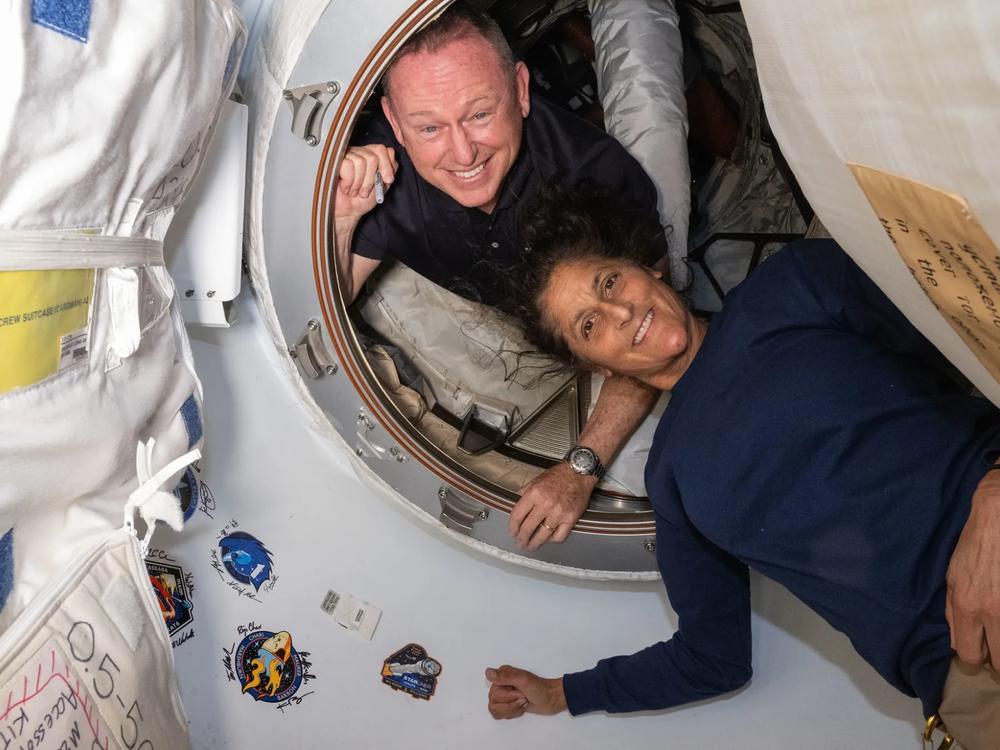Section Branding
Header Content
NASA still doesn't know when two astronauts will be able to come home
Primary Content
NASA still doesn’t know when a pair of astronauts could return to Earth in Boeing’s Starliner spacecraft, but officials say they’ve made progress in understanding the glitches that bedeviled the new vehicle’s first test flight with a crew on board.
After Sunita Williams and Butch Wilmore blasted off into orbit in early June, five of the spacecraft’s 28 reaction control system thrusters inexplicably shut themselves down just before the capsule was about to dock with the International Space Station.
Eventually, four of the five were brought back online, and Starliner did dock with the station. But before trying to bring the astronauts back to Earth, NASA officials want to better understand what’s going on.
They’ve also been studying some leaks of helium – used to pressurize the spacecraft’s propulsion system – to make sure there’s no chance that these leaks could become serious.
While hardware testing has been underway on the ground, Williams and Wilmore have just been hanging out in the station, waiting for NASA to sort everything out.
“We’re really focused on bringing Butch and Suni home on Starliner,” Steve Stich, the manager of NASA’s Commercial Crew Program, told reporters on Thursday, saying he thought they finally were closing in on having all the information they needed “to make sure that we can come home safely.”
This weekend, the team plans to fire the thrusters of the docked spacecraft to gather more data. An undocking review meeting to discuss it all is likely to happen in the following days.
Recreating the thruster firings with hardware on the ground already has the NASA team thinking that they’ve figured out the cause of the weirdness: The way the thrusters were fired in space may have degraded two different internal seals.
“We think these findings are very significant and are likely the root case,” says Mark Nappi, vice president and program manager for the Commercial Crew Program at Boeing.
What’s more, they believe they understand the cause of the vehicle’s helium leaks.
“We’ll bring the complete story to the agency for the undock review sometime next week,” says Nappi, “and then we’ll be ready to execute the last part of the mission.”
If for some reason it’s determined that the two astronauts can’t return in Starliner, NASA has contingency plans, like bringing them home in a SpaceX capsule. But Starliner has enough battery life to stay in space through early September, so NASA has some time.
“We’re methodically working through the data,” says Stich, “and we’ll come home when we’re ready.”
Bottom Content

